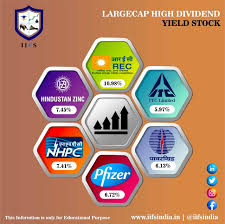
The article contains information about the findings of technical analysis research conducted in developing and emerging markets. It also addresses the basic assumptions behind technical analysis. The article will discuss the Market indicators used by technical analyst and the downsides of using computers to accomplish this task. The article also provides information on how technical analysts use their research to help them make decisions.
Technical analysis research results in developed and emerging countries
Research has focused on the effectiveness of traditional technical analysis in investing in stocks and assets. It is not clear whether this type investment is profitable in developed countries or developing ones. The paper's authors review a number of studies on the profitability and viability of this method in developed and emerging nations.
Park and Irwin reviewed the most recent studies, and they concluded that most of these studies found positive results using technical analysis. However, they noted that there are a number of problems with these studies, such as data manipulation and the development of ex-post strategies.

These are the basic assumptions of technical analyses
Fundamentally, technical analysis research is based on the idea that price patterns tend to repeat themselves. This principle has been around since over 100 years. Today, it is just as relevant as ever. Technical analysts use price charts as a way to identify these patterns and make predictions about their future behavior. However, a technical analysis researcher must consider certain things before using the technique to trade stocks.
First, technical analytics has its flaws. While it may be effective in some cases, it often fails to accurately predict the future. This is due to the fact that lagging indicator only provide information about past events, and cannot predict the future. Be cautious when using lagging signals. Rather, aim to find trends that are not merely a result of previous events.
Technical analysts use market indicators
There are a variety of market indicators used by technical analysts, including moving averages, momentum readings, volume patterns, and breakout signals. These indicators are intended to give traders a different viewpoint on price action. These indicators are mathematically derived from trading volume, investor sentiment, open interest data, price and trading volume. These indicators can be used by traders to identify entry points and exit points in the markets.
Technical analysts also use the relative strength indicator. This indicator measures the strength a trend and is useful when it's overbought/oversold. Other common indicators are the Bollinger Bands and moving average (MACD). These indicators are important in identifying overbought and oversold levels, because they provide insight into the supply and demand of a security.

Computers for technical analysis have their drawbacks
There are many benefits to using computers for technical analysis research, but there are also some drawbacks. Some people believe that it doesn't give useful information and that the patterns visualized can be misleading. Despite the fact that it can help identify trends, it should only be used in conjunction other research methods to reduce risk or maximize return.
One of the primary advantages of using a computer for technical analysis research is speed. With access to real-time data, it's possible to analyze the market much faster than it would be possible with a human analyst. There is one problem: you do not have the training required to read charts. This lack of experience can lead analysis paralysis.
FAQ
What is security on the stock market?
Security is an asset that produces income for its owner. Most security comes in the form of shares in companies.
There are many types of securities that a company can issue, such as common stocks, preferred stocks and bonds.
The earnings per shares (EPS) or dividends paid by a company affect the value of a stock.
Shares are a way to own a portion of the business and claim future profits. You will receive money from the business if it pays dividends.
You can sell your shares at any time.
What are some advantages of owning stocks?
Stocks can be more volatile than bonds. Stocks will lose a lot of value if a company goes bankrupt.
However, share prices will rise if a company is growing.
Companies often issue new stock to raise capital. This allows investors to purchase additional shares in the company.
To borrow money, companies can use debt finance. This gives them cheap credit and allows them grow faster.
A company that makes a good product is more likely to be bought by people. The stock will become more expensive as there is more demand.
As long as the company continues producing products that people love, the stock price should not fall.
What is a mutual-fund?
Mutual funds are pools or money that is invested in securities. They allow diversification to ensure that all types are represented in the pool. This reduces risk.
Professional managers manage mutual funds and make investment decisions. Some funds let investors manage their portfolios.
Mutual funds are often preferred over individual stocks as they are easier to comprehend and less risky.
Stock marketable security or not?
Stock is an investment vehicle which allows you to purchase company shares to make your money. This can be done through a brokerage firm that helps you buy stocks and bonds.
You can also invest in mutual funds or individual stocks. There are more mutual fund options than you might think.
The difference between these two options is how you make your money. Direct investment is where you receive income from dividends, while stock trading allows you to trade stocks and bonds for profit.
In both cases, you are purchasing ownership in a business or corporation. However, when you own a piece of a company, you become a shareholder and receive dividends based on how much the company earns.
Stock trading is a way to make money. You can either short-sell (borrow) stock shares and hope the price drops below what you paid, or you could hold the shares and hope the value rises.
There are three types to stock trades: calls, puts, and exchange traded funds. Call and put options give you the right to buy or sell a particular stock at a set price within a specified time period. ETFs, which track a collection of stocks, are very similar to mutual funds.
Stock trading is very popular because investors can participate in the growth of a business without having to manage daily operations.
Although stock trading requires a lot of study and planning, it can provide great returns for those who do it well. You will need to know the basics of accounting, finance, and economics if you want to follow this career path.
How do you choose the right investment company for me?
You want one that has competitive fees, good management, and a broad portfolio. Fees vary depending on what security you have in your account. Some companies don't charge fees to hold cash, while others charge a flat annual fee regardless of the amount that you deposit. Others charge a percentage on your total assets.
It's also worth checking out their performance record. If a company has a poor track record, it may not be the right fit for your needs. Avoid low net asset value and volatile NAV companies.
Finally, you need to check their investment philosophy. Investment companies should be prepared to take on more risk in order to earn higher returns. They may not be able meet your expectations if they refuse to take risks.
Statistics
- Even if you find talent for trading stocks, allocating more than 10% of your portfolio to an individual stock can expose your savings to too much volatility. (nerdwallet.com)
- US resident who opens a new IBKR Pro individual or joint account receives a 0.25% rate reduction on margin loans. (nerdwallet.com)
- Our focus on Main Street investors reflects the fact that American households own $38 trillion worth of equities, more than 59 percent of the U.S. equity market either directly or indirectly through mutual funds, retirement accounts, and other investments. (sec.gov)
- The S&P 500 has grown about 10.5% per year since its establishment in the 1920s. (investopedia.com)
External Links
How To
What are the best ways to invest in bonds?
You need to buy an investment fund called a bond. They pay you back at regular intervals, despite the low interest rates. You can earn money over time with these interest rates.
There are several ways to invest in bonds:
-
Directly buying individual bonds
-
Buy shares from a bond-fund fund
-
Investing through an investment bank or broker
-
Investing through financial institutions
-
Investing through a pension plan.
-
Invest directly through a stockbroker.
-
Investing in a mutual-fund.
-
Investing in unit trusts
-
Investing through a life insurance policy.
-
Investing in a private capital fund
-
Investing using an index-linked funds
-
Investing through a Hedge Fund